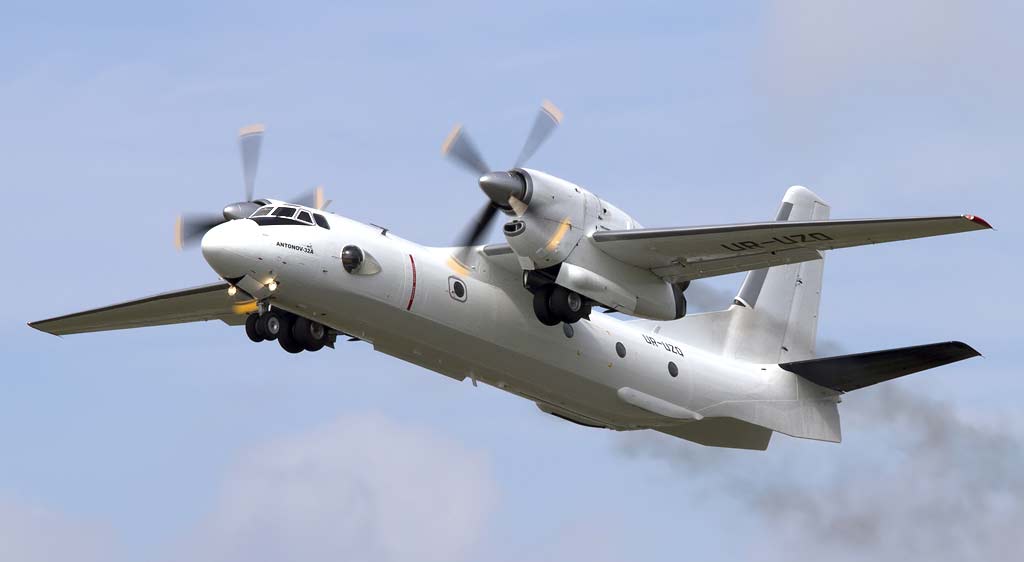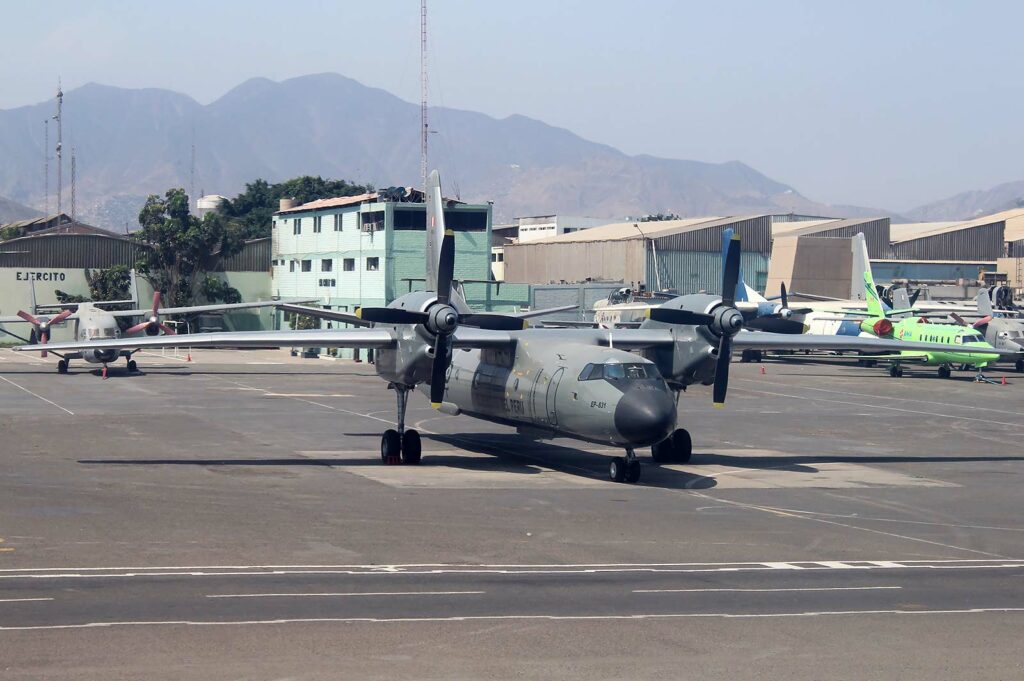The Antonov An-32 is a high-performance, twin-engine turboprop military transport aircraft.
The Antonov An-32, often referred to as Cline, is a deep modernization of the An-26. Engineered for medium-range missions, this aircraft features a robust design tailored for operations in hot and high conditions, notably with improved high-altitude performance enabled by more powerful Ivchenko AI-20 turboprop engines. It has a maximum takeoff weight of 27,000 kg and can carry up to 50 passengers or 6,700 kg of cargo. The An-32 excels in versatility with capabilities for airdropping supplies and paratroops, making it suitable for both military and humanitarian operations. Its performance enhancements and rugged build facilitate operations in challenging environments from desert airstrips to mountainous terrains.

History of the Development of the Antonov An-32 (Cline)
Developed by the Antonov design bureau in Ukraine, the An-32 is essentially an evolution of the earlier An-26, tailored specifically to meet the demands of operation in extremely hot and high-altitude environments. The inception of the An-32 program dates back to the late 1970s, with the Soviet military needing a versatile and robust aircraft capable of operating efficiently in the diverse and challenging climates of its vast territories. The aircraft was designed to perform reliably above terrain where air density significantly decreases engine performance and efficiency.
The development program was officially launched by the Antonov bureau under the leadership of Oleg Antonov. The first flight of the An-32 took place on 9 July 1976. Although the aircraft does not have a NATO reporting name due to its primary usage within Soviet-aligned states and later independent entities, its designation ‘Cline’ is widely used in aviation circles to identify this model.
The An-32 was engineered to thrive in harsh conditions, equipped with more powerful engines and an improved wing design for better lift capabilities at high altitudes. The design objective was not just to create a transport capable of carrying more cargo but also to ensure operational capabilities in areas where few other aircraft could safely and efficiently operate. This included regions with hot climates and high-altitude airfields, prevalent in parts of the USSR and its allies in Africa and Asia.
Design of the Antonov An-32 (Cline)
The Antonov An-32 is distinguished by its high-wing, twin-turboprop configuration which enhances its performance in adverse weather conditions and rough terrain. The aircraft is powered by two Ivchenko AI-20 engines, each capable of producing up to 5,180 horsepower, a significant increase over its predecessors. These engines allow for a maximum takeoff weight of approximately 59,500 pounds (27,000 kilograms) and provide the thrust necessary for short takeoff and landing (STOL) capabilities.
Structurally, the An-32 is designed with a reinforced undercarriage and a robust frame to withstand the increased operational stresses found in unpaved and semi-prepared airstrips. It measures approximately 78 feet in length with a wingspan of 95 feet. The cargo hold is designed to be versatile, accommodating a range of payloads from standard containers to vehicles and troops. Additionally, the aircraft is equipped with rear cargo doors and a ramp for easy loading and unloading, enhancing its functionality in logistic roles.
The aircraft’s capability to operate in temperatures ranging from -50 to +50 degrees Celsius and at airfields over 4,500 meters above sea level gives it a significant advantage in global operations. However, these enhancements come with trade-offs. The increased weight and power requirements lead to higher fuel consumption rates, and the sophisticated engine and airframe components necessitate a rigorous maintenance regimen, impacting operational costs.
Performance of the Antonov An-32 (Cline)
The An-32’s performance is robust, with a maximum speed of 530 km/h (330 mph) and a cruising speed of 470 km/h (290 mph). The aircraft’s operational range is 2,500 km (1,550 miles) with maximum payload, and it can reach a service ceiling of 9,500 meters (31,168 feet). The powerful engines allow for a rapid ascent and the ability to maintain speed and altitude even in thin air, which is crucial for operations in mountainous regions.
When compared to its contemporaries such as the C-130 Hercules, the An-32 holds its own in terms of payload capacity and takeoff capability, particularly in hot and high conditions where many other aircraft face performance degradation. This capability makes the An-32 particularly valuable for nations needing a reliable workhorse in diverse and challenging environments, contributing significantly to its adoption outside the former Soviet states.
Variants of the Antonov An-32 (Cline)
The An-32 has several variants designed for different uses, enhancing its versatility as a military and civilian aircraft. The An-32A is a standard model, primarily used for transport missions. The An-32B features enhanced navigation and communication equipment, making it more suitable for international flights. Specialized variants include the An-32P Firekiller, equipped for firefighting missions with water bombing capabilities, and the An-32B-100, which offers modernized avionics and an increased payload capacity.

Military Use and Combat of the Antonov An-32 (Cline)
The An-32 has been actively employed in various military roles, including troop transport, parachute drops, and emergency supplies delivery. Its robust design and reliable performance in adverse conditions have made it a preferred choice in several conflicts. For example, the Indian Air Force has utilized the An-32 extensively in the Himalayan regions, where its ability to operate from high-altitude airstrips is unmatched. The aircraft has also seen service in Africa, where its capability to perform in hot and dusty conditions is highly valued.
In combat scenarios, the An-32 has been used for airdropping supplies and troops, often in hostile environments. It has been involved in numerous military operations where its ability to quickly deliver large amounts of cargo and personnel has been crucial. The aircraft’s service record includes participation in United Nations missions, providing humanitarian aid and support.
The An-32 has been exported to several countries, underlining its reputation as a reliable transport aircraft. It remains in service with several air forces around the world, though some operators have begun to replace it with newer models. The aircraft’s longevity in service is testament to its design and utility, making it one of the more successful Soviet-era transport aircraft designs.
The Antonov An-32 (Cline) stands as a significant achievement in aviation, designed to meet specific operational challenges. Its robust design, powerful performance, and versatility in payload handling have ensured its continued use in various military and civilian roles worldwide. As newer technologies and aircraft designs emerge, the An-32 continues to be valued for its unique capabilities, particularly in regions where operating conditions are challenging for other types of aircraft.
Back to Transport planes.